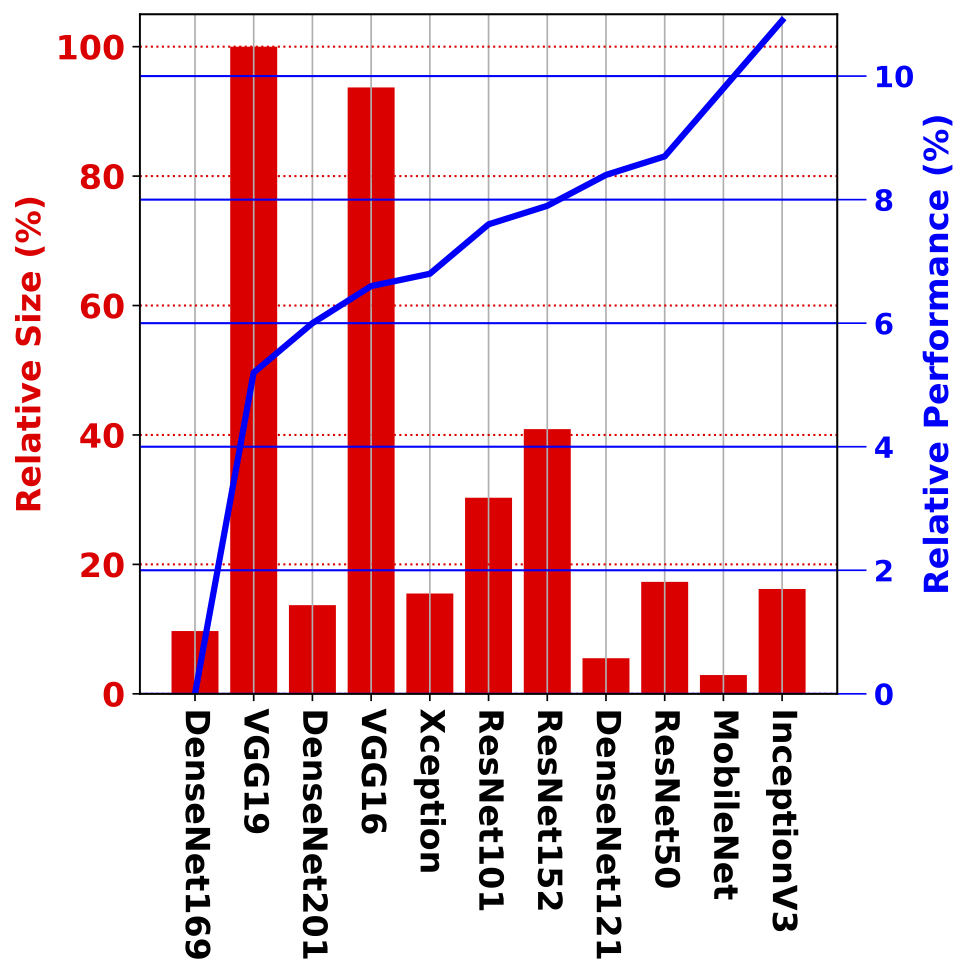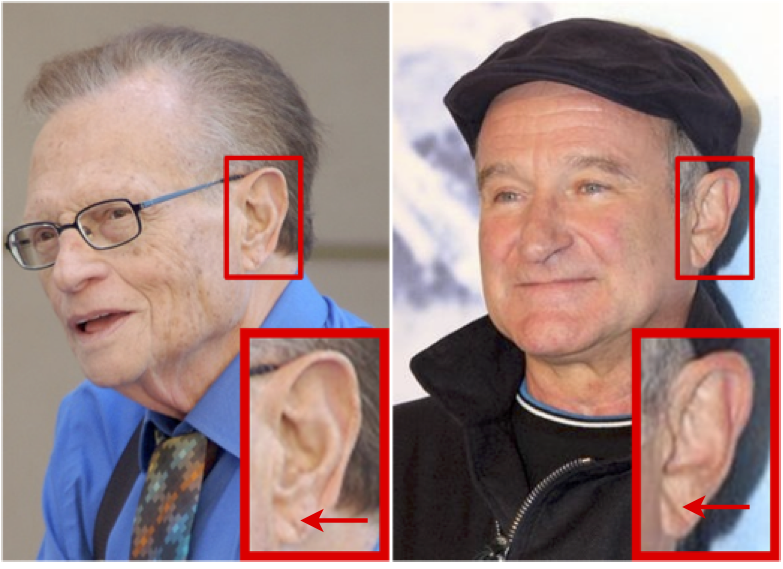Abstract
Diagonal earlobe crease (DELC), also known as Frank's sign, is a diagonal crease, line, or deep fold that appears on the earlobe and has been hypothesized to be a potential predictor of heart attacks. The presence of DELC has been linked to cardiovascular disease, atherosclerosis, and increased risk of coronary artery disease. Some researchers believe that DELC may be an indicator of an impaired blood supply to the earlobe, which could reflect similar issues in the heart's blood supply. However, more research is needed to determine whether DELC is a reliable marker for identifying individuals at risk of heart attacks or other cardiovascular problems. To this end, the authors have released the first DELC dataset to the public and investigated the performance of numerous state-of-the-art backbones on annotated photos. The experiments demonstrated that combining pre-trained encoders with a customized classifier achieved 97.7% accuracy, with MobileNet being the most promising encoder in terms of the performance-to-size trade-off.
Social Impact
The implementation of AI for DELC detection can have a significant social impact. By utilizing AI technology, healthcare professionals can offer a cost-effective, non-invasive screening method that is accessible worldwide. AI enables real-time DELC detection using smartphone cameras, providing an innovative way to detect early signs of cardiovascular disease, especially in regions with limited access to advanced medical equipment.
- Early detection of heart disease with non-invasive AI tools
- Increased accessibility to healthcare through AI-powered smartphone applications
- Reduction in healthcare costs by utilizing AI for early detection
How does it work?
Our approach leverages deep learning techniques for the detection of the diagonal earlobe crease (DELC), a potential marker for cardiovascular disease. Unlike traditional methods that rely on manual annotation, our system is trained on a dataset composed of DELC-positive and DELC-negative images. We use a pre-trained encoder, such as MobileNet, paired with a customized classifier to detect DELC in real-world earlobe images.

Given an input image I of the ear, our method aims to classify whether the ear shows signs of DELC or not. The process begins with a pre-processing stage, where we extract and crop the earlobe region using data augmentation techniques to enhance the variability in the training dataset. Once the ear region is isolated, the image is fed into a pre-trained encoder, which transforms the image into a feature vector. This feature vector is then processed by a fully connected classifier specifically trained to distinguish between DELC and non-DELC cases.
The core of our method lies in the use of deep convolutional networks (CNNs) trained on the ImageNet dataset, which provides robust feature extraction capabilities. These features are then fine-tuned for the specific task of DELC detection by adjusting the classifier’s parameters during training. To optimize the model, we used cross-entropy loss and fine-tuned the model until convergence, achieving an accuracy of up to 97.7% on our dataset.
Our approach uses efficient deep learning models, achieving similar accuracy with both MobileNet and InceptionV3, but MobileNet is five and a half times smaller and three times faster. This makes MobileNet ideal for real-time applications, offering a balance between speed, size, and accuracy across various platforms without sacrificing performance.

| Backbone | Val. Acc. | Test Acc. | #BParam |
|---|---|---|---|
| Xception | 95.1% | 94.1% | 22.9M |
| VGG16 | 96.5% | 93.9% | 138.4M |
| VGG19 | 95.1% | 92.7% | 143.7M |
| ResNet50 | 98.1% | 95.8% | 25.6M |
| ResNet101 | 97.5% | 94.8% | 44.7M |
| ResNet152 | 97.8% | 95.1% | 60.4M |
| MobileNet | 98.7% | 96.7% | 4.3M |
| InceptionV3 | 98.9% | 97.7% | 23.9M |
| DenseNet121 | 96.4% | 95.5% | 8.1M |
| DenseNet169 | 88.7% | 88.1% | 14.3M |
| DenseNet201 | 95.1% | 93.4% | 20.2M |
BibTeX
@conference{icpram23,
author={Sara Almonacid{-}Uribe and Oliverio Santana and Daniel Hernández{-}Sosa and David Freire{-}Obregón},
title={Deep Learning for Diagonal Earlobe Crease Detection},
booktitle={Proceedings of the 12th International Conference on Pattern Recognition Applications and Methods - ICPRAM},
year={2023},
pages={74-81},
publisher={SciTePress},
organization={INSTICC},
doi={10.5220/0011644400003411},
isbn={978-989-758-626-2},
issn={2184-4313},
}
@InProceedings{10.1007/978-3-031-54726-3_1,
author="Almonacid-Uribe, Sara
and Santana, Oliverio J.
and Hern{\'a}ndez-Sosa, Daniel
and Freire-Obreg{\'o}n, David",
title="Exploring Data Augmentation Strategies for Diagonal Earlobe Crease Detection",
booktitle="Pattern Recognition Applications and Methods",
year="2024",
publisher="Springer Nature Switzerland",
pages="3--18",
isbn="978-3-031-54726-3"
}

